Interviews, TravelThe Freight Train: A Celebration of Mundaka
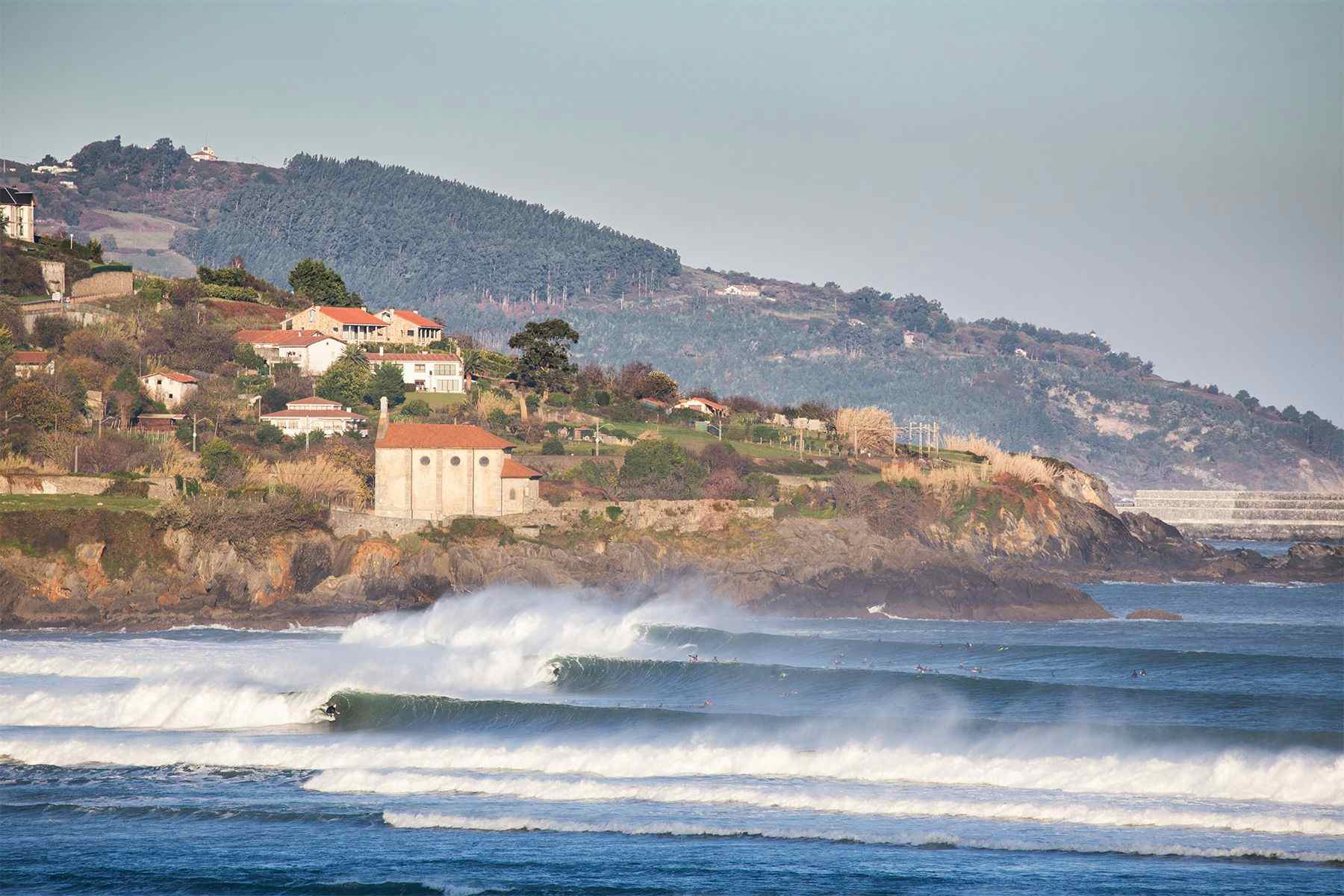
Autumn has arrived in the Northern Hemisphere, and with it the prospect of tempestuous yet more consistent swells. In Europe, many eyes will turn to a tiny nook on the coast of northern Spain, in a region known as the Basque Country, bordered by the untameable waters of the Bay of Biscay.
And what makes this pin on the map so special?
Three syllables: Mun–da–ka.
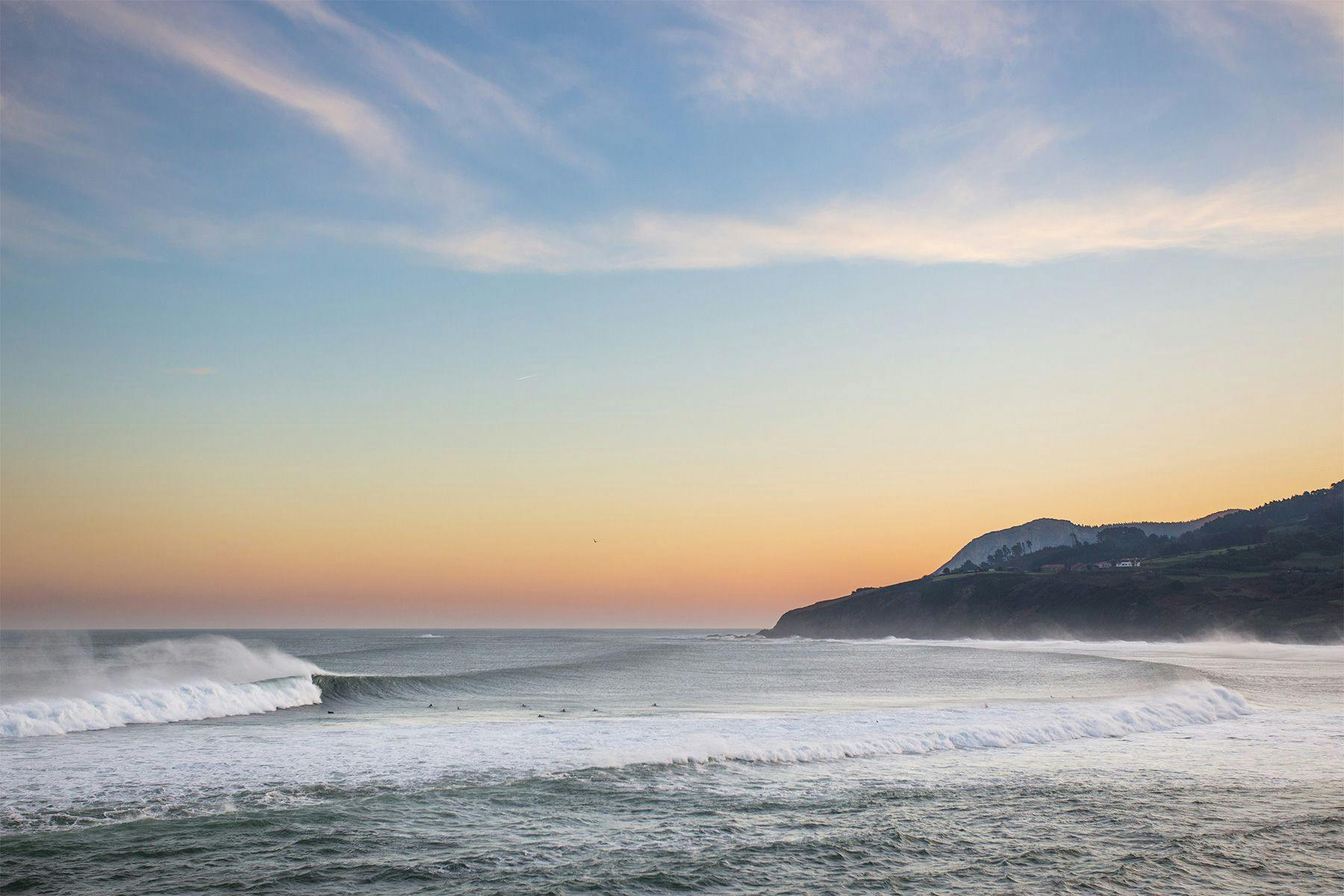
Since the professional surf community’s last gasp here, when Billabong withdrew from the area in 2010, Mundaka has been somewhat out of the spotlight. And while wave pools may be the talk of the moment, there is something they do not seem to provide – the unexpected. That, and breath-taking wipe-outs.
Thus in celebration of such raw (and yet beautiful) unpredictability, and of Mundaka’s resilience, Surf Simply approached Mike Dobos (a surfer who has had his “roots pulled out of Florida and replanted in the Basque Country”), to reminisce on the peculiarities of the wave and what makes it such a quintessential rivermouth break..
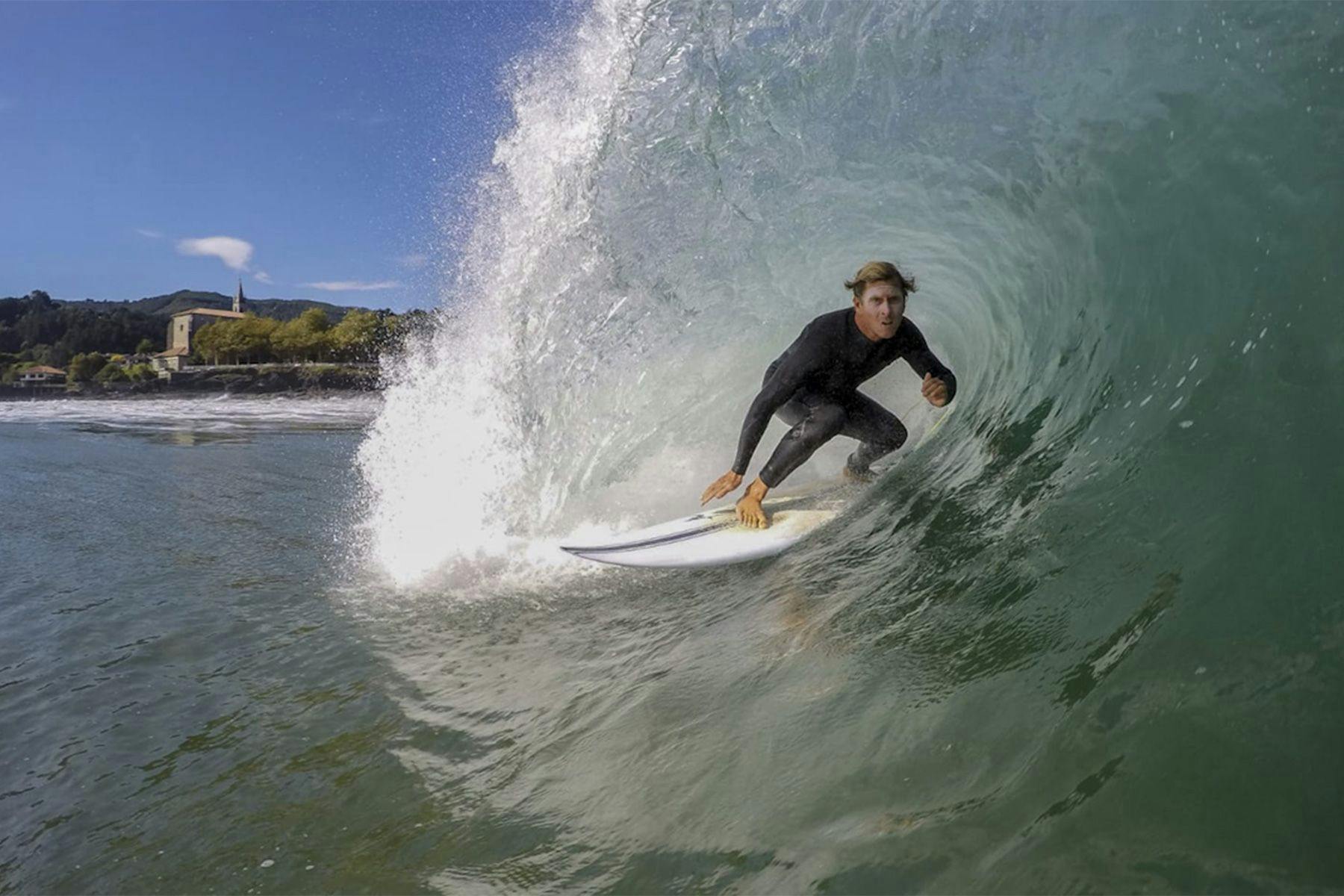
“When you get your first barrel here, see the town and how beautiful the place is, it doesn’t take much convincing after that.”
Mike’s first contact with Mundaka was back in 1995, as the 3rd or 4th generation of expats who arrived and decided to stay. He had come to Madrid to visit a girlfriend who, knowing about this spot in the Basque Country where a lot of surfers went, booked them a hotel in town (the same hotel where he still works today). Originally from the East Coast of Florida, Mundaka was very different from the culture he’d grown up in, and being a goofy-footer Mike fell in love with the village on that very first visit. He learned Spanish on his own, came back a year later, and has been there ever since.
How was the wave when you got to Mundaka?
“When I got here this place was pretty insane. Like, you’d take off from the peak by the port and there used to be this dry island that would come up about a foot out of the water at low tide. After the end of the summer, these big tides would suck all the sand out there and the first few little swells that would come in would create Snapper Rocks type barrels. You could barely even paddle into the damn things as you’d end up on dry sand. Crazy. And it would dredge from that point all the way down to the middle of the river. It was like a clock, it would just do it. It was pretty amazing.”
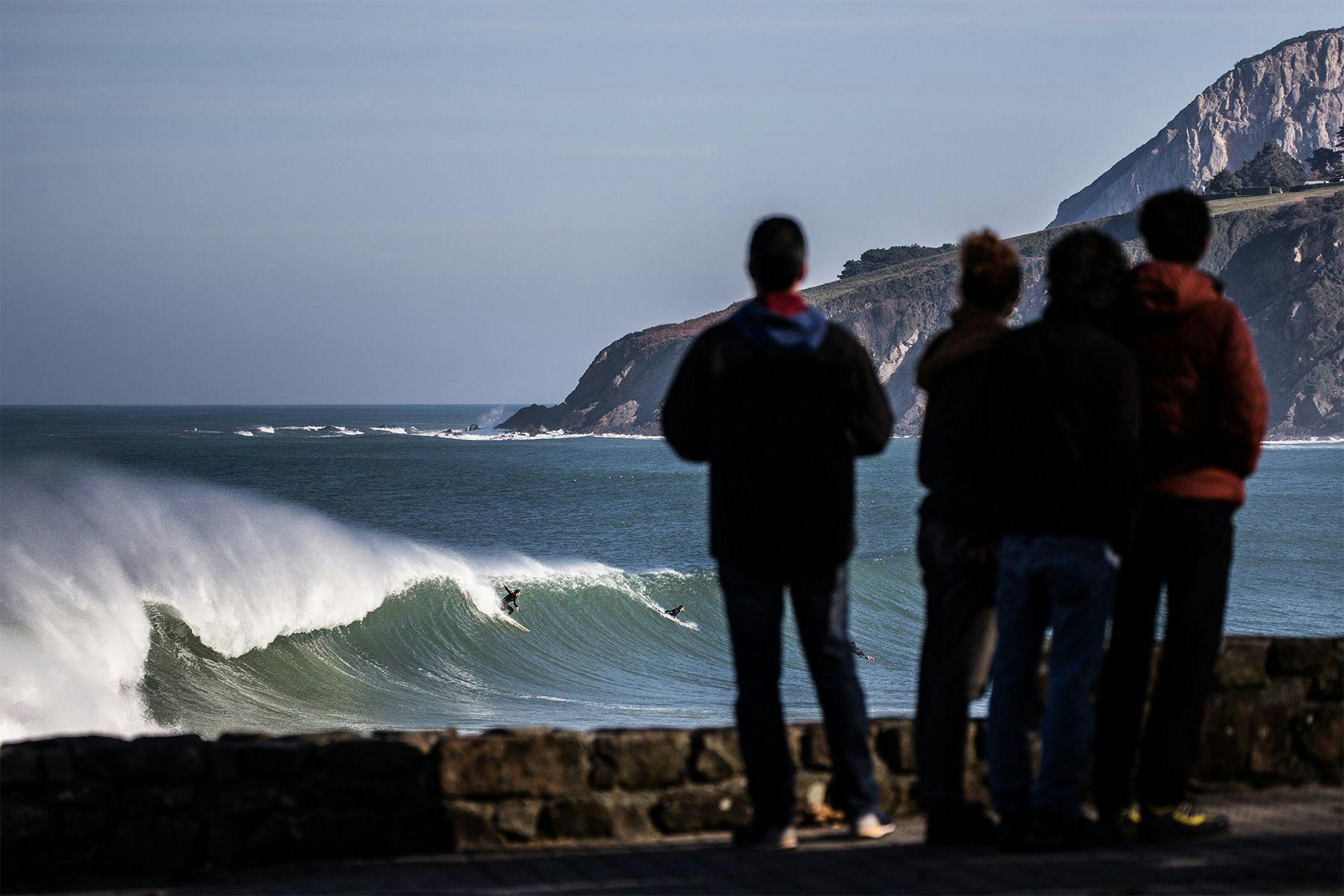
Speaking of dredging, what about the dredge project in 2003?
“The truth of the matter is that Mundaka has always been dredged. There’s a shipbuilding yard up the river in Murueta and they’ve been floating boats out of there for years, starting off back when Franco was in power. So the dredging has always been a thing, it’s nothing new. But, the dredging that happened that year was so much more massive than the way they’d always done it that it didn’t really help the sand where we surf at all; like, it really hurt it and hurt it for a long time.”
How so?
“They basically took 300,000 cubic meters of sand out of that river mouth; it was like a three-month project with tubes of piping going from where the river mouth opens up all the way up into the estuary. They cut through the meanders which snakes way up from where the river Guernica starts all the way into Mundaka, where the river mouth opens up and does this nice perfect “S” at the very end. And they just ploughed straight through it, made a four-lane highway there to float these boats out. A year later, though, this massive storm came and washed that artificial beach away. You might take three months and thousands of tax-paying euros to do something like that but in one or two big storms, mother nature just fixes it. The wave definitely came back after that but it took a while for it to get right again.”
Is there any talk of more dredging?
“As far as I know, since the surfers made a bunch of noise, there hasn’t been talk of any dredging. But that doesn’t mean they’re not going to do it in the future. I’m sure they could, or would, but I hope it’s never like the last time they did it – they really messed up when they did that.”
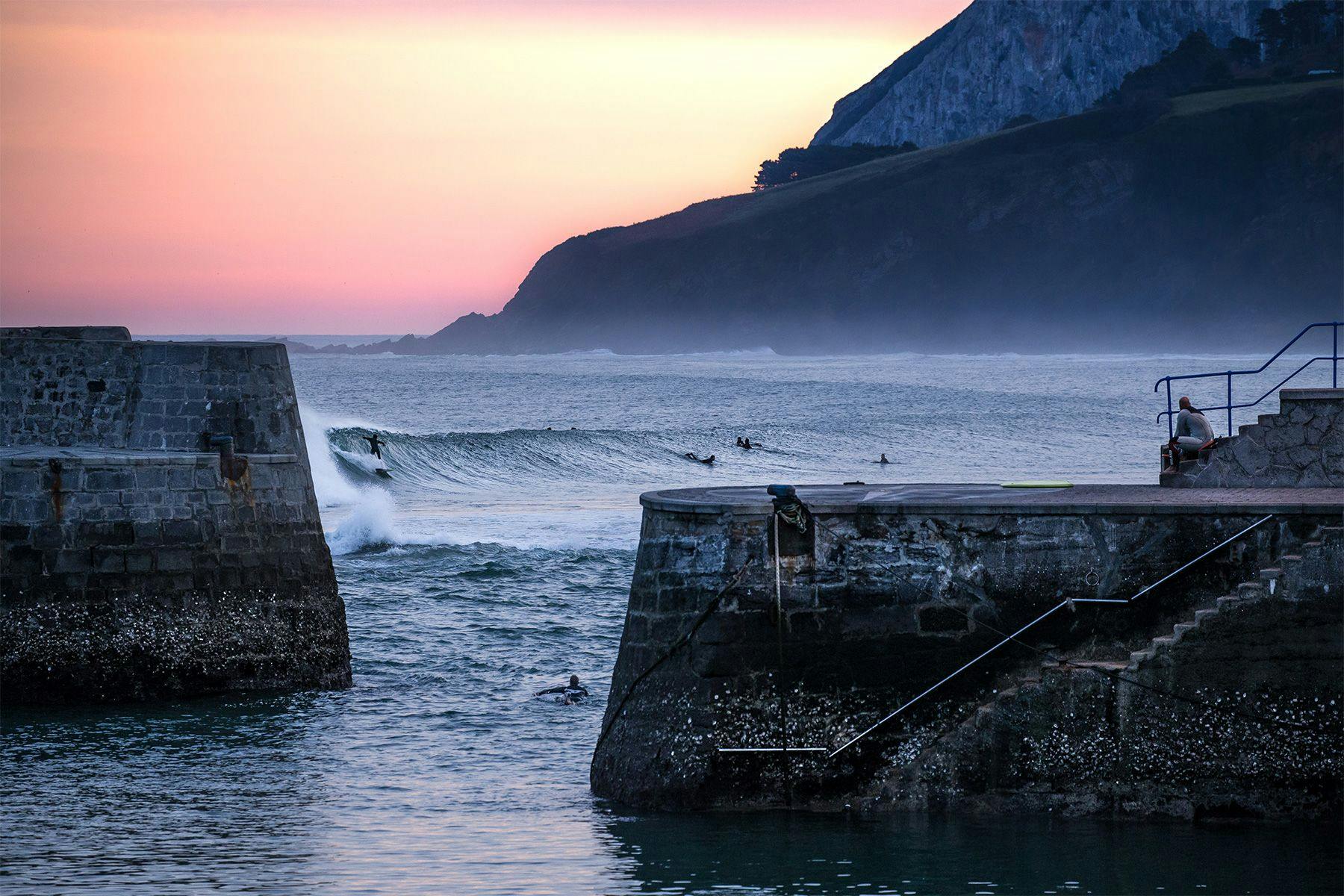
When does Mundaka show its true essence?
“I would say, northwest swell; for sure anything west-northwest. Definitely swell period is important and I’d say from 12 seconds up, so anything from 12 to 20 seconds. Anything from 4 to 6ft all the way up to the 6-8ft range, maybe even up to the 8-10ft range is perfect. Winds: south. Straight howling south or light south-east/south-west, but that straight south is great. I’d say those are the ingredients for it to come through; that and a blue sky and a warm fall day. When all the ingredients come together, oh man, you’ve got a freight train barrel.”
Please, more about the barrels…
“It can be anywhere from 3ft to double and triple overhead and you’ll get the barrel of your life out there. You can even get barrelled when it’s 2ft out there. We’ve all been barrelled when it’s 2ft and even then you’re tripping out, let alone get this stand up thing that goes on for quite a few seconds. Not as long as in a place like Namibia, of course, but I think Mundaka is a little more accessible than places like that…”
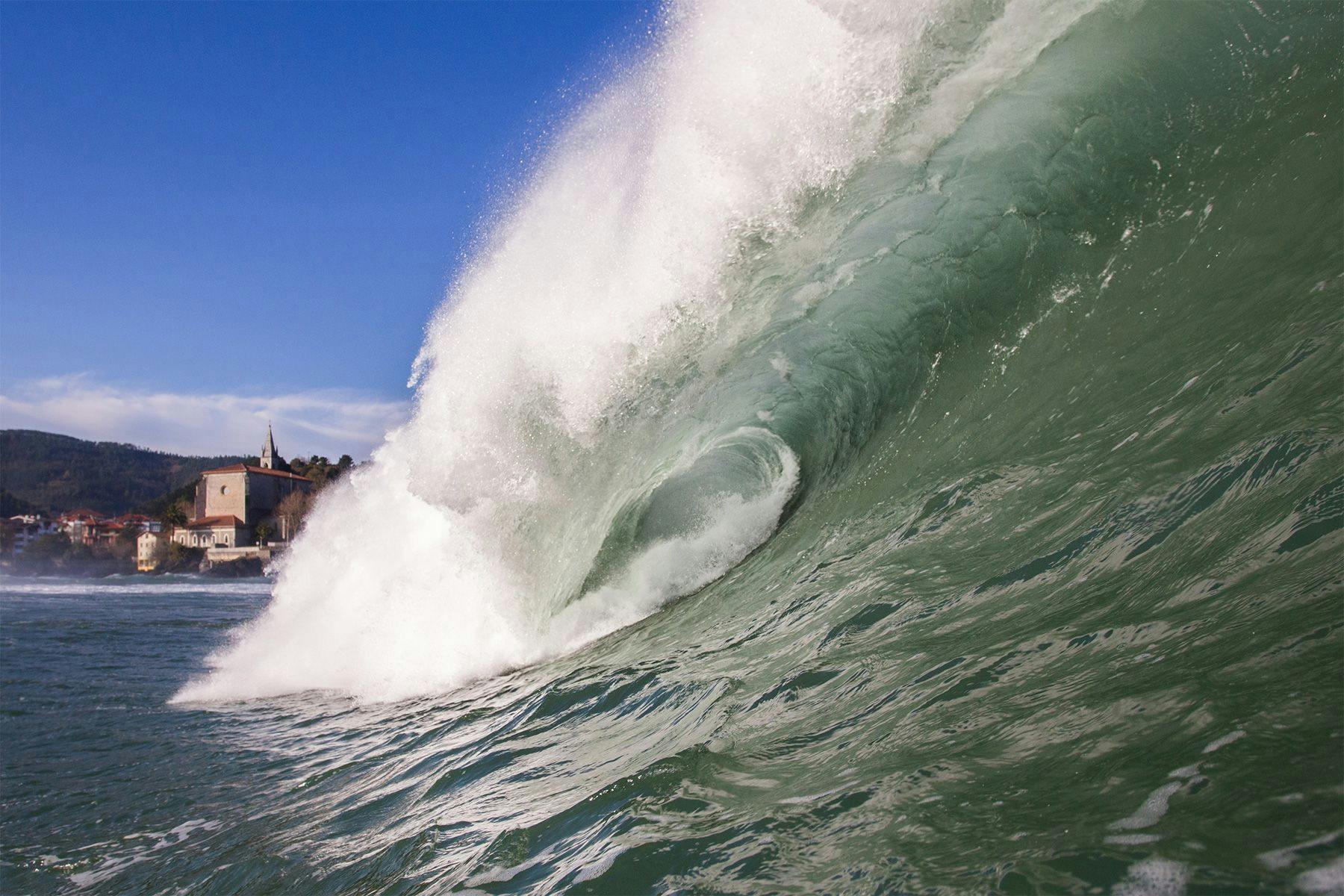
Then again, every recipe has a secret ingredient.
“You can definitely get those ingredients to come together quite a few times during the year, but then, of course, the sand has to be right. If you look down at it from an aerial view, it has to be sort of like a shark’s fin or even a surfboard’s fin; that perfect shape into the bay with a defined channel that goes out where the water comes rushing out. Because the current definitely helps make the wave of Mundaka on the outgoing tide. It makes it do what it does. It makes it grind. People complain about paddling, but you love that current because that’s what makes Mundaka do its thing so well.”
And the ride?
“It’s challenging; it’s not that easy to surf Mundaka. Everybody thinks ‘Oh, it gets perfect, it’s like Indo, blah blah blah.’ B*** s***. This wave is hard and it will mow your a**. It will make you work. So it can be actually a scary wave sometimes. It’s heavy when it’s really big; it’s even heavy at 4ft sometimes. It’s crazy – this wave will make you back out. You’ll be paddling up and, as they say here, you’ll do a ‘yeepy-yeepy’ and pull back on them because they go square and start dredging.”
Clearly there are difficulties then. So what’s the main challenge?
“It’s hard to find that perfect speed; to get in the barrel and stay locked in for a really long time. So if you don’t keep up the perfect speed it’s pretty easy to get passed by the wave or get eaten up by the foam ball. Or even trying to make the drop; you don’t wanna get caught too far behind cause once you make it the wave can just race ahead of you.”
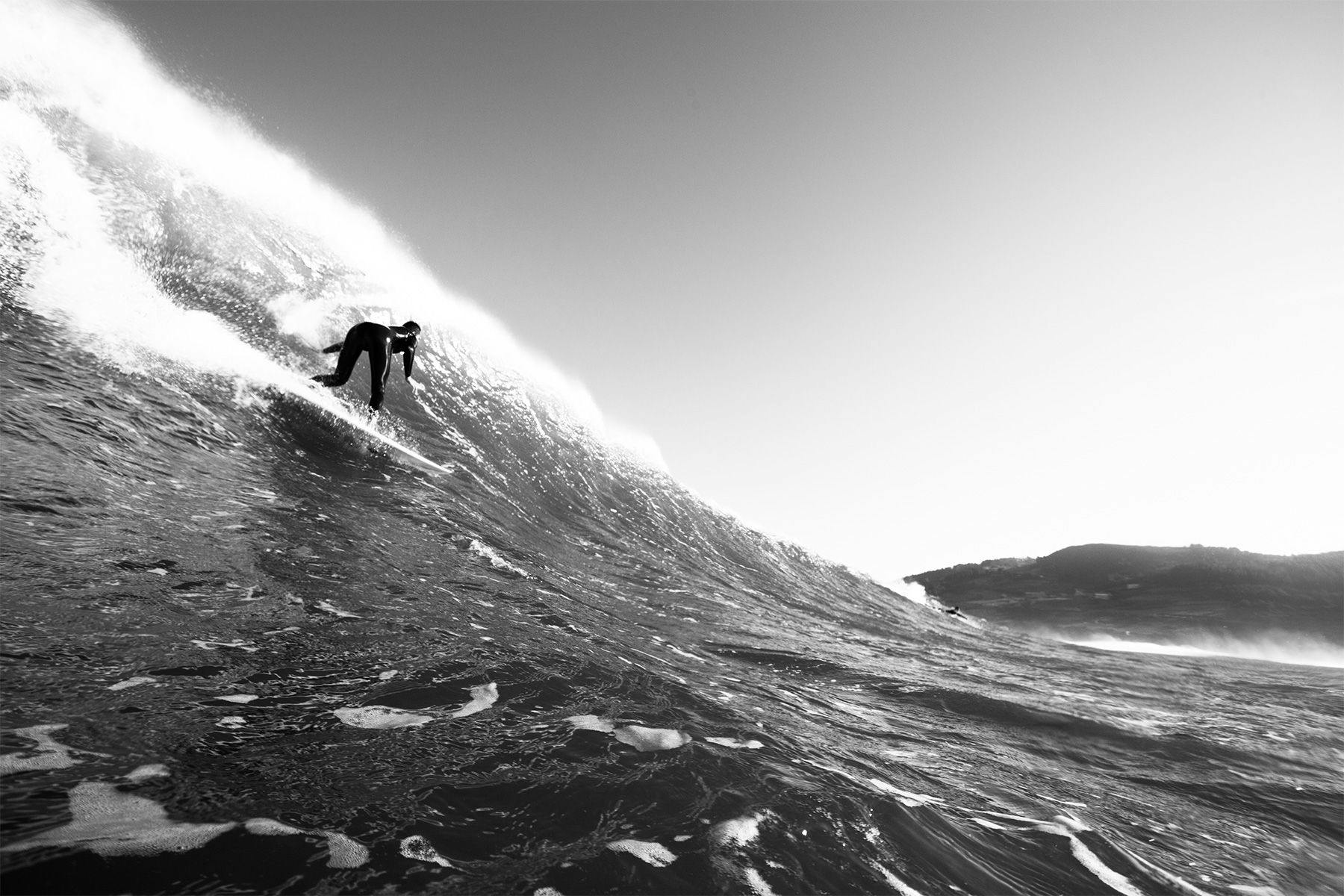
Let’s say you make the drop, then?
“Sometimes when you’re coming out of your bottom turn, you gotta really put on the gas; you gotta race and pump inside the barrel to make that first long section and then you can think about trimming after the hard work has been done. Other than that, when it’s not barrelling, you’ve got a long wall that offers the chance to do a lot of big, racy arcs and turns and re-entries. You can do a lot of re-entries in Mundaka, about 10 to 12 turns. It’s got a lot of faces to it as well – not just barrels all the time. But mostly when it does open up and you get a proper barrel out here, it’s the best damn feeling in the world. Consider yourself privileged if you get a really long barrel and make it out of it here in Mundaka. Especially when it’s crowded.”
What if it is crowded?
“When Mundaka gets crowded, it’s mostly guys who come from neighbouring beaches. So, you get out here on a crowded day and of course, you sit back and let them have their waves. They’re very passionate about positioning and pecking order.”
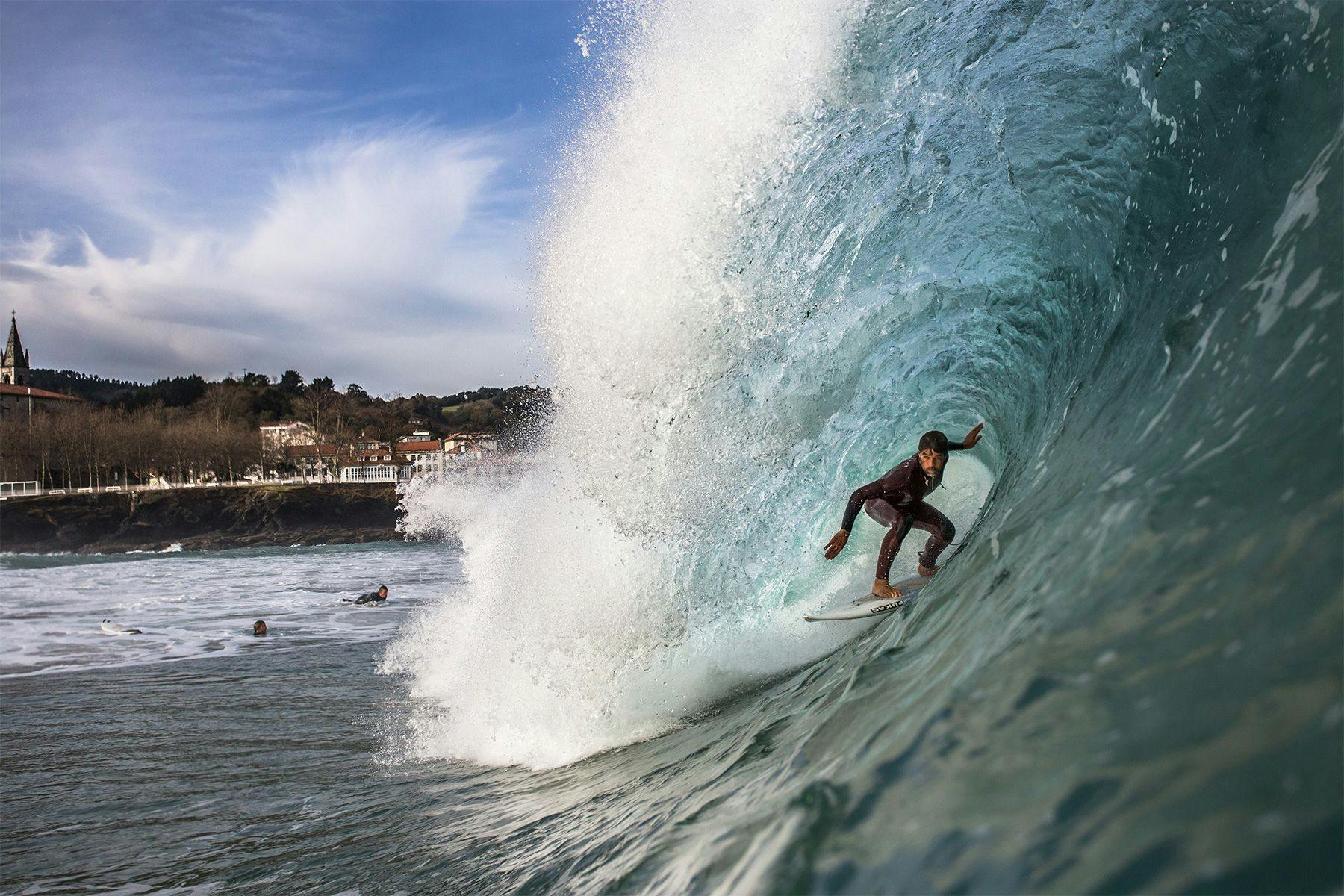
How has the wave influenced the community of Mundaka?
“Mundaka is on the map for its wave. People know about Mundaka because of its wave. Hosting the CT definitely placed us as an international surfing spot and since then we’ve had a lot of board riders come here. But I would say that since the last contest they had (2009) which was won by De Souza, when the tour finally decided to pull up their ropes and get the heck out of here, Mundaka by then was already on the map. I wanna say that maybe the withdraw of the CT affected us for the first few years, but I wouldn’t say that it does any more. I think now there is a steady flow of tourism coming to Mundaka, because of all the extra things that they’ve been doing here in the Basque Country lately. So people are not coming here just for the surfing. Definitely, the name of the wave draws at least 60% of the tourists in; there is no doubt about more than half. But the rest is based around the local culture, other outdoor activities, the wine region, etc. So the withdraw of the CT has affected it but not that much any more.”
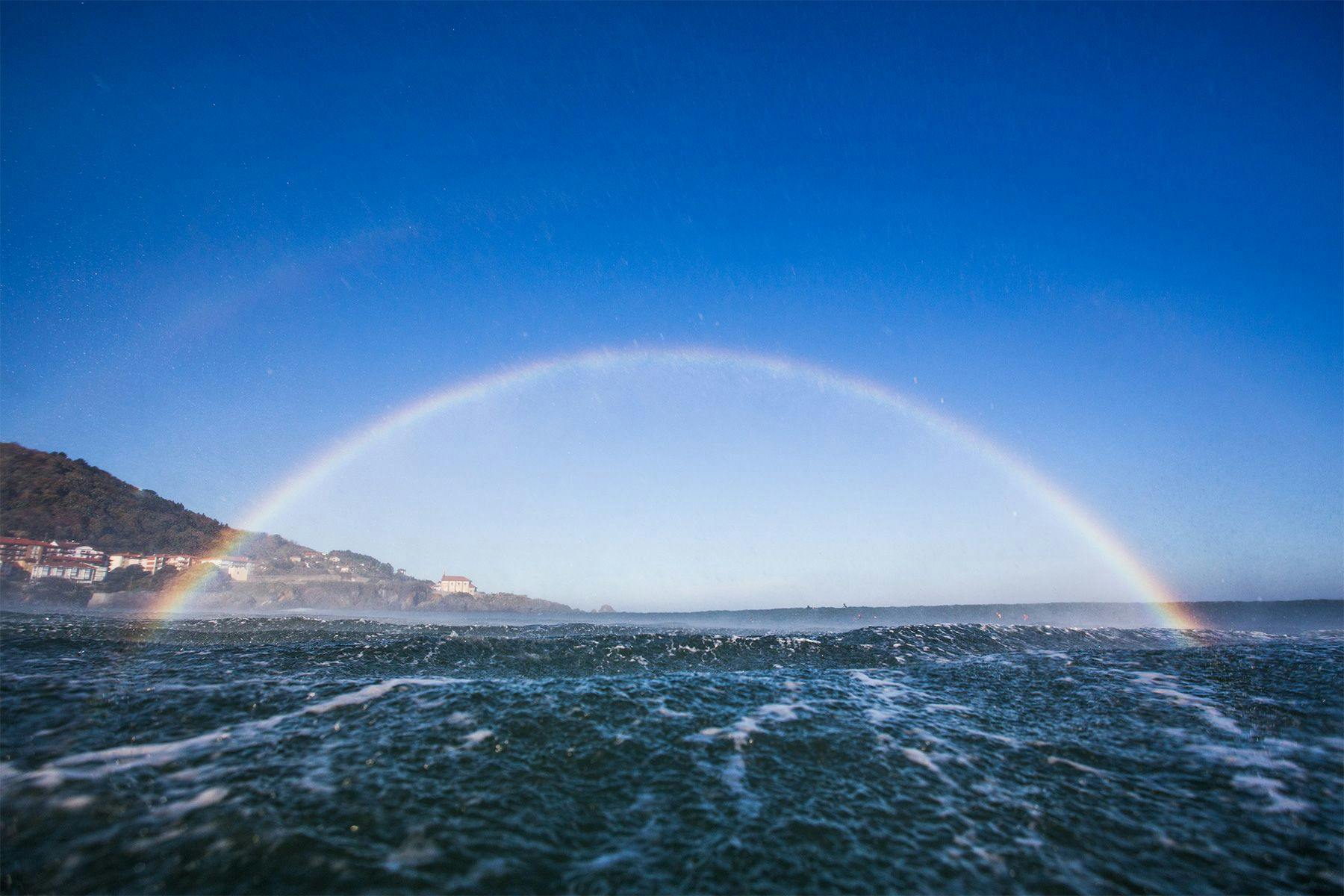
What about Mundaka in the future?
“The local contingent here is going to continue to grow; it already has, and I can imagine in four or five years time it’s just going to multiply. What would be a shame to see is if they went commercial with this area and started urbanizing it, building surf shops here and surf shops there, kind of getting like Hossegor did a little bit. That would really suck. I think that would really ruin the flavor and the feel of this town.
Also, I hope its growth doesn’t cause the whole Biosphere Reserve and the estuary to get built up; I hope that it doesn’t have that kind of cause and effect. I think when that starts to happen this place is just going to get ruined, but if that doesn’t happen I’m sure it’ll stay beautiful and quiet for years to come. Because that is why people come here, they come for its beauty and quietness. I hear everybody I’ve ever given surf lessons to or worked in the hotel with always comment on how beautiful and lovely and undeveloped this place is. And people like that. They don’t want to come and stay in some casino resort, hanging out at the pool. They want to hang out in the river – that’s our pool. And I’d love it to stay this way, if not for me then for the generations to come to enjoy that too. We need to preserve that for them.”
The author and Surf Simply would like to thank Mike Dobos from Surfin Mundaka for his assistance with the article, photographer Edu Bartolome for the image of Mike surfing, and photographer Michal Pelka (Instagram @michalpelka) for his images of Mundaka.